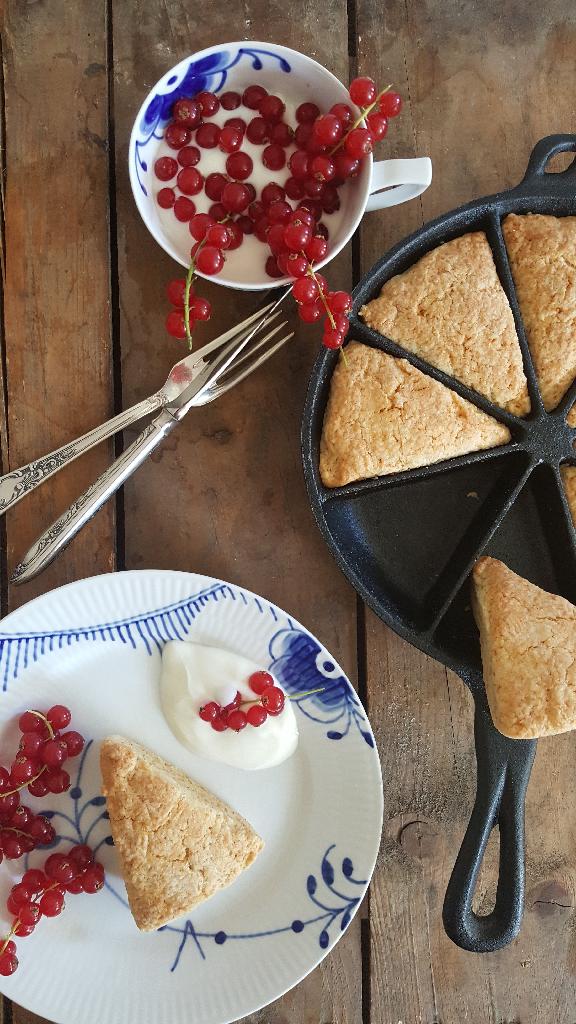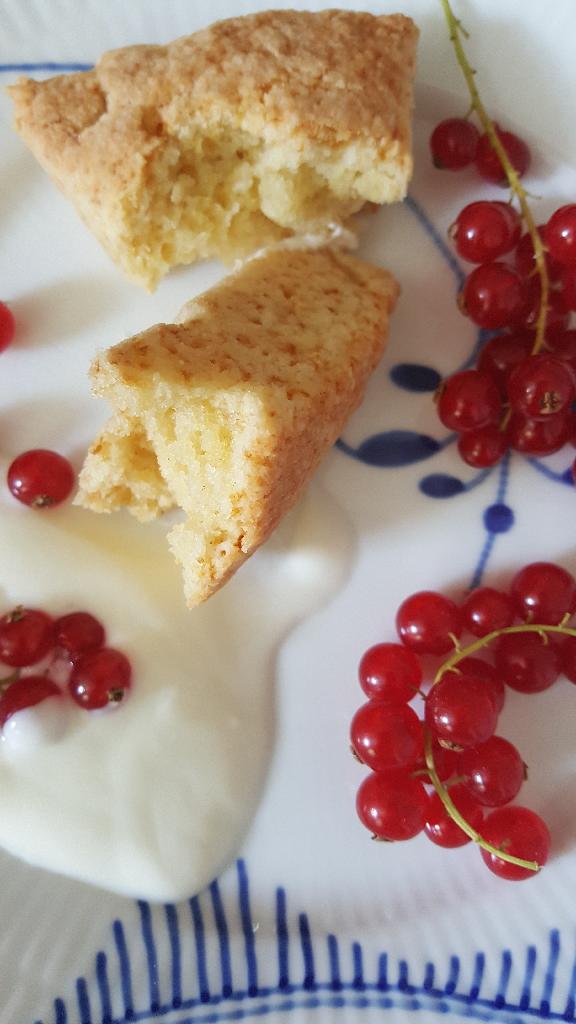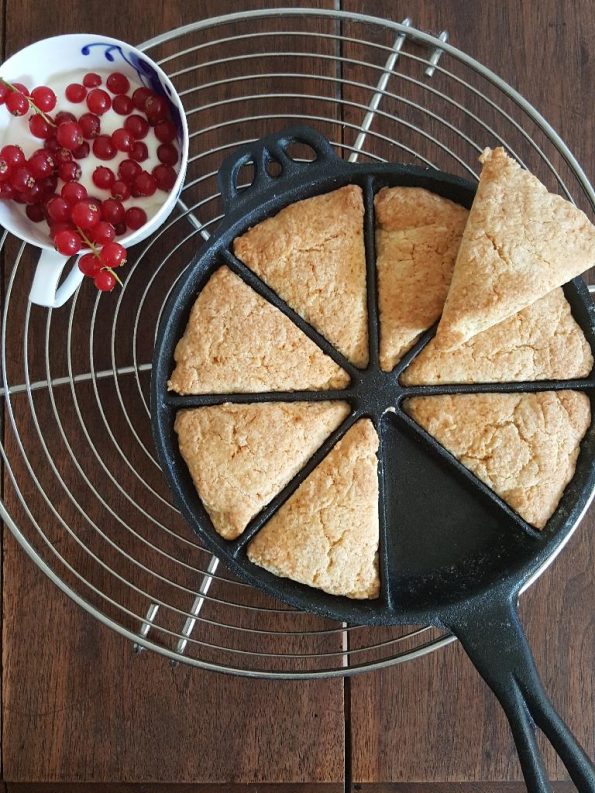Our Classic Cream Scones


Red currants are amazing, and they grow well in almost any soil. They are astonishingly sour and need a good dose of sugar to overcome the large amount of ascorbic acid (more vitamin C than in oranges) and citric acid, however the taste is definitely worth it. We like to pull the little branches through the tines of a fork to get the berries off, then put them in sweetened yogurt or ricotta. They are a wonderful accompaniment to scones that we love to have for breakfast or in the afternoon for tea. I have been cutting the scones out as rounds or hearts or triangles, with or without raisins, currants or dried cranberries and sometimes with a citrus glaze. However, Karin bought this cast-iron wedge pan from Camp Chef a few months ago and I decided to try using it to make our Saturday breakfast scones. I sprayed it with baking spray and cut the dough into triangles that just fit the pan and baked until light brown. Of course, they took longer to bake than if cut out and placed on a baking sheet because the cast iron takes a good while to heat up. We were delighted with the moist, soft texture and will be using the pan regularly from now on. Here is our recipe, modified from a number of other scone recipes. Eggs tend to make scones heavier and denser so we do not use any, just sweet cream as liquid.
Ingredients
360g (12 oz) all purpose flour
2-1/2 tsp baking powder (we like tartaric acid based baking powder, but use what you have)
1/4 tsp salt
60 – 90 g (2-3 oz) sugar (vary according to taste)
90 g (3 oz) ice-cold butter cut into small cubes
210 – 240 ml (7 -8 oz) sweet whipping cream
Method
Preheat Oven to 190 °C (375 °F)
Mix or sieve dry ingredients in a large bowl, then using your fingers or a pastry blender work in the butter to a consistency of coarse corn meal. Add the smaller amount of liquid to begin with and carefully mix with a fork until a thick dough forms. If too dry keep adding cream until the dough holds together. It is better to have a somewhat sticky dough than a dry, crumbly dough. This depends upon the flour you are using, so it is a matter of trial at first. If using raisins, currants, chocolate chips, dried cranberries or bayberries, add them now and mix them in well.
You may pat the dough out into a circle, or using a rolling pin roll it out and then either cut out using pastry or cookie cutters, or cut into triangles to fit the greased or baking spray treated wedge pan. Place the cut out scones on a baking tray covered with parchment or baking paper or with a baking mat. Bake for 20 minutes. If using the cast-iron pan bake longer (about 30 minutes) until the scones are lovely light brown in colour. Enjoy with butter, clotted cream, jelly or jam, honey or whatever else strikes your fancy. Scones are best when still warm from the oven.
No matter what you do with them, scones will become firm and dry if you store them more than a few hours. Pop them into the microwave for just a few seconds and they will magically come back to life.


